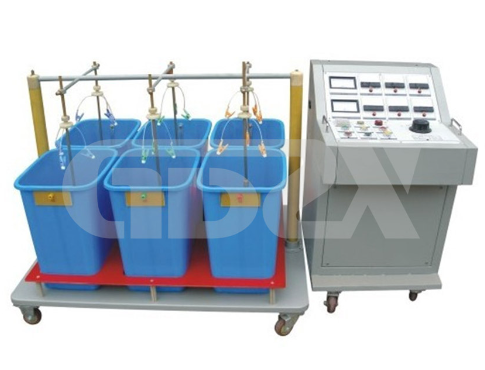NEWSnews
ZXYTM-II Boot/Glove Voltage Tester: Technical Analysis for Electrical Safety
This technical article examines the design and operational characteristics of the ZXYTM-II insulated boot and glove voltage withstand testing system, a specialized apparatus for evaluating the dielectric integrity of personal protective equipment (PPE) in high-voltage environments. Targeting electrical technicians and safety officers, the paper details its compliance with industry testing protocols, performance metrics, and practical advantages over legacy methods.
1.Introduction
Electrical safety protocols mandate rigorous testing of insulating gloves and boots to prevent dielectric breakdown during live-line work. Traditional manual testing methods often lack precision, efficiency, and multi-sample capacity. The ZXYTM-II system addresses these limitations through automated, standardized testing with integrated leakage current monitoring.
2.Technical Specifications
1) Input voltage: 0–220 V AC, 50 Hz
2) Output voltage: 0–100 kV (customizable)
3)Capacity: 0–50 kVA (customizable)
4) Simultaneous testing: 6 units (3 pairs)
5)Weight: 70 kg (dielectric test platform), 45 kg (power-frequency withstand platform)
6)Mobility: Integrated wheelbase for repositioning
3.Key Performance Advantages
3.1 Multi-Sample Efficiency
The system concurrently evaluates up to 6 PPE units (gloves/boots), tripling throughput compared to sequential single-unit testing. Individual leakage current channels (≤1 μA resolution) enable precise fault isolation without cross-channel interference.
3.2 Dynamic Leakage Current Monitoring
Real-time leakage current measurement (0–100 kV range) identifies gradual insulation degradation undetectable by pass/fail thresholds alone. This supports predictive maintenance strategies for aging PPE.
3.3 Adaptive Voltage Regulation
Programmable output (10 kV resolution) accommodates regional standards:
1)IEC 60903:2022 (gloves) – 20–40 kV class-dependent
2)ASTM F2412-18a (boots) – 20 kV minimum
Custom voltage profiles facilitate compliance with enterprise-specific protocols.
4.Safety-Engineered Architecture
1) Grounded Faraday cage configuration eliminates stray currents
2) Fail-safe interlock system de-energizes outputs upon cabinet breach
3) Epoxy-resin insulated transformers prevent partial discharge
5.Operational Workflow
6.Pre-test: Calibrate using reference capacitor (0.1 μF ±5%).
7.Load PPE into water-filled electrodes (conductivity ≤10 μS/cm).
8.Ramp voltage at 1 kV/s to target level (e.g., 20 kV for Class 00 gloves).
9.Monitor leakage currents for 3 minutes; reject units exceeding 16 mA (gloves) or 18 mA (boots).
10.Maintenance Protocol
1) Annual dielectric fluid testing (ASTM D877)
2) Monthly electrode polishing to maintain <5 μm surface roughness
3) Quarterly HIPOT validation per IEEE 4-2013
11.Case Study: Utility Grid Application
A 500 kV substation reduced PPE failure rates by 32% after implementing ZXYTM-II, identifying 14% of visually intact gloves with subcritical insulation (<12 MΩ). The system’s mobility allowed on-site testing during outage windows, eliminating logistics delays.
12.Conclusion
The ZXYTM-II redefines PPE dielectric testing through its multi-channel precision, safety-focused design, and workflow efficiency. Its ability to detect incipient insulation defects supports proactive safety management in high-risk electrical environments. Technologists should prioritize this system when upgrading legacy test racks lacking quantitative leakage analysis. Future iterations may integrate IoT-enabled trend analytics for fleet-wide PPE health monitoring.
GDZX is a manufacturer of power detection equipment, offering a diverse range of products with comprehensive models and providing professional technical support. Contact us at +86-27-6552607 or +86-17396104357.Website: http://en.gdzxdl.com/






















